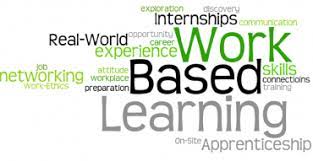Introduction
Work-based learning (WBL) has been rapidly gaining traction as a valuable tool for improving skill development and employability across various industries. This educational paradigm combines practical work experience with theoretical learning, offering students and employees a win-win situation; they gain hands-on experience while enhancing theoretical knowledge. In this article, we will explore the various advantages of work-based learning and its practical applications.
Advantages of Work-Based Learning
1. Skill Development: The most significant benefit of WBL is the opportunity to acquire industry-specific skills that are difficult to learn in a traditional classroom setting. It offers learners exposure to real-world scenarios, enabling them to develop technical skills and enhance their problem-solving abilities.
2. Employee Retention: Businesses that offer WBL programs have noted higher employee job satisfaction and retention rates. Employees are more committed when they feel valued and when the company is investing in their professional growth.
3. Bridging the Skills Gap: By offering students access to WBL programs, educational institutions can help address the increasing demand for qualified professionals in various sectors. This collaboration helps bridge the skills gap by equipping learners with relevant competencies required for specific industries.
4. Enhanced Networking: Work-based learning provides opportunities for networking and engagement with industry experts, mentors, and peers. These connections can significantly contribute to long-term career success through shared knowledge and collaborations.
5. Improved Employment Prospects: Students who participate in WBL programs often find better job opportunities due to their practical experience in a particular field. Many organizations prefer hiring candidates with both academic training and applied experience to ensure a smooth transition into their workforce.
Implementing Work-Based Learning Programs
To reap the benefits of work-based learning effectively organizations must consider these key factors:
1. Collaboration between Employers and Educators: The first step in establishing a successful WBL program lies in forming partnerships between employers and educational institutions. This collaboration helps create curricula that blend theoretical education with practical, hands-on experience.
2. Engaging Mentors: Industry professionals who offer guidance and support to students throughout their work-based learning journey play an essential role. They act as mentors and ensure that the learning process is aligned with the expectations of the employer and the goals of the student.
3. Performance Assessment: Regular assessments can help gauge a learner’s progress during WBL programs. Evaluations should take into account both applied skills and theoretical knowledge acquisition, enabling improvements throughout the learning process.
4. Providing Support Services: Financial support, transportation assistance, and accommodations for learners with special needs are crucial aspects of an effective WBL program. Addressing these factors can ensure inclusivity and equal access to learning opportunities for all students.
Conclusion
Work-based learning presents unique opportunities as a powerful tool for skill development and employability across diverse industries. It enables individuals to gain hands-on experience while acquiring essential theoretical knowledge, making them better prepared to tackle real-world challenges in their careers. As more businesses and educational institutions recognize this value, collaborative work-based learning programs are poised to become a vital component of professional growth and success in today’s workforce.




